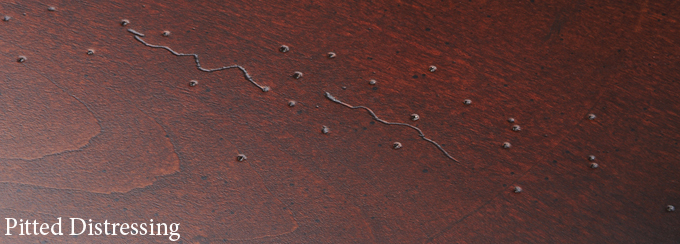Distressed Finishes & Distressing - FAQDistressing in the decorative arts is the activity of making a piece of furniture or object appear aged and older, and there are many methods to produce an appearance of age and wear. Although distressed finishes are viewed as a refinishing technique, it is the opposite of finishing in a traditional sense. In distressing, the object's finish is intentionally destroyed or manipulated to look less than perfect, such as with sandpaper or paint stripper. For example, the artisan often removes some but not all of the paint, leaving proof of several layers of paint speckled over wood grain underneath. This becomes the "finished" piece. Distressing has become a popular design style and decorative art form. The artisan attempts a rustic, attractive, one-of-a-kind appearance or vintage look. The final appearance is often called the patina. Distressing can be applied to a variety of surfaces and materials such as wood, glass, metal, plastic, stone, concrete, plaster, and paint. Solid pine furniture in particular is one of the most ideal furniture types to apply distressing to. The Shabby chic style has made both distressing and antiquing popular.  Antiquing In addition to distressing the finish, the artisan may reapply historical paint colors, antique-like faux finish and crackle varnishes. They might also apply period accent details, such as antique knobs on dresser drawers. Several methods involve glazes in which colors blend into crevices to give an antique appearance. The antiquing process is time-consuming and normally requires many steps to obtain the appearance of an aged and worn finish. In the mass-produced furniture market, it is common for 'distressing' to include faux woodworm holes. These can easily be distinguished from real woodworm holes (as might be present on a genuine antique) as faux woodworm holes will usually be all of identical diameter and vertical into the wood. Genuine woodworm holes, on the other hand, would be of varying diameter and usually not perfectly vertical. Techniques
|



